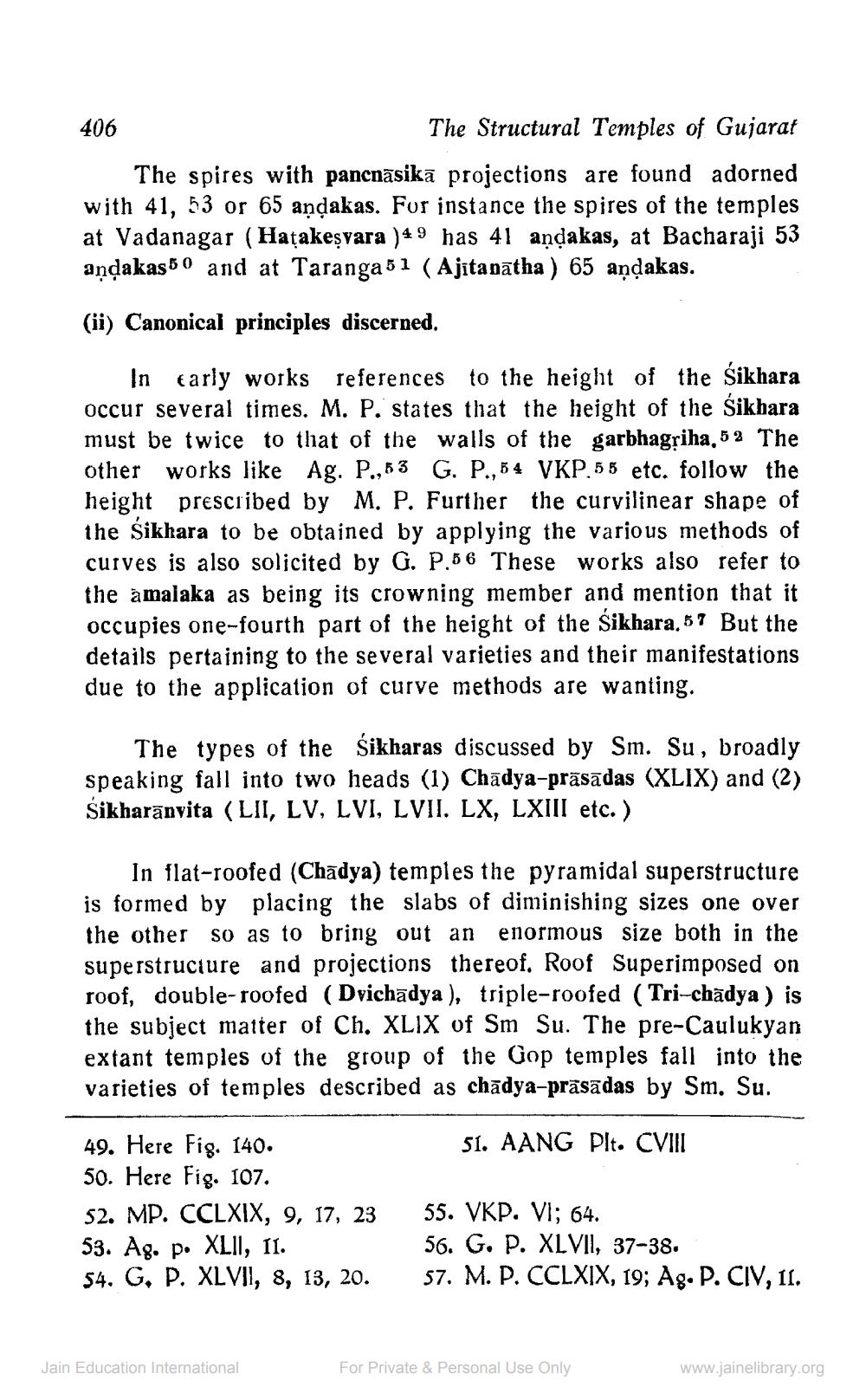________________
406
The Structural Temples of Gujarat The spires with pancnāsikā projections are found adorned with 41, 53 or 65 andakas. For instance the spires of the temples at Vadanagar (Hațakeşyara ) 4 9 has 41 andakas, at Bacharaji 53 andakas 50 and at Taranga 51 (Ajitanātha ) 65 anďakas.
(ii) Canonical principles discerned.
In early works references to the height of the Sikhara occur several times. M. P. states that the height of the Sikhara must be twice to that of the walls of the garbhagriha, 5 2 The other works like Ag. P., 53 G. P., 54 VKP.55 etc. follow the height prescribed by M. P. Further the curvilinear shape of the Sikhara to be obtained by applying the various methods of curves is also solicited by G. P.56 These works also refer to the amalaka as being its crowning member and mention that it occupies one-fourth part of the height of the Sikhara.57 But the details pertaining to the several varieties and their manifestations due to the application of curve methods are wanting.
The types of the ikharas discussed by Sm. Su, broadly speaking fall into two heads (1) Chādya-prāsādas (XLIX) and (2) Sikharānvita (LII, LV, LVI, LVII. LX, LXIII etc.)
In flat-roofed (Chadya) temples the pyramidal superstructure is formed by placing the slabs of diminishing sizes one over the other so as to bring out an enormous size both in the superstructure and projections thereof. Roof Superimposed on roof, double-roofed (Dvichadya), triple-roofed (Tri-chädya ) is the subject matter of Ch. XLIX of Sm Su. The pre-Caulukyan extant temples of the group of the Gop temples fall into the varieties of temples described as chādya-prāsādas by Sm. Su.
51. AANG Plt. CVIII
49. Here Fig. 140. 50. Here Fig. 107. S2, MP. CCLXIX, 9, 17, 23 53. Ag. p. XLII, 11. 54. G. P. XLVII, 8, 13, 20.
55. VKP. VI; 64. 56. G. P. XLVII, 37-38. 57. M. P. CCLXIX, 19; Ag.P. CIV, 11.
Jain Education International
For Private & Personal Use Only
www.jainelibrary.org




